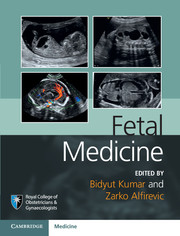Book contents
- Fetal Medicine
- Advanced Skills Series
- Fetal Medicine
- Copyright page
- Contents
- List of contributors
- Preface
- Section 1 Genetics and antenatal screening
- Section 2 Embryology, fetal physiology and fetal anatomy
- Section 3 Fetal anomalies
- Section 4 Fetal disease
- Section 5 Termination of pregnancy
- Section 6 Fetal growth and wellbeing
- Section 7 Multiple pregnancy
- Section 8 Placenta, amniotic membrane and amniotic fluid
- Section 9 Diagnostic and therapeutic invasive procedures
- Index
- References
Section 4 - Fetal disease
Published online by Cambridge University Press: 05 April 2016
- Fetal Medicine
- Advanced Skills Series
- Fetal Medicine
- Copyright page
- Contents
- List of contributors
- Preface
- Section 1 Genetics and antenatal screening
- Section 2 Embryology, fetal physiology and fetal anatomy
- Section 3 Fetal anomalies
- Section 4 Fetal disease
- Section 5 Termination of pregnancy
- Section 6 Fetal growth and wellbeing
- Section 7 Multiple pregnancy
- Section 8 Placenta, amniotic membrane and amniotic fluid
- Section 9 Diagnostic and therapeutic invasive procedures
- Index
- References
- Type
- Chapter
- Information
- Fetal Medicine , pp. 201 - 242Publisher: Cambridge University PressPrint publication year: 2016



